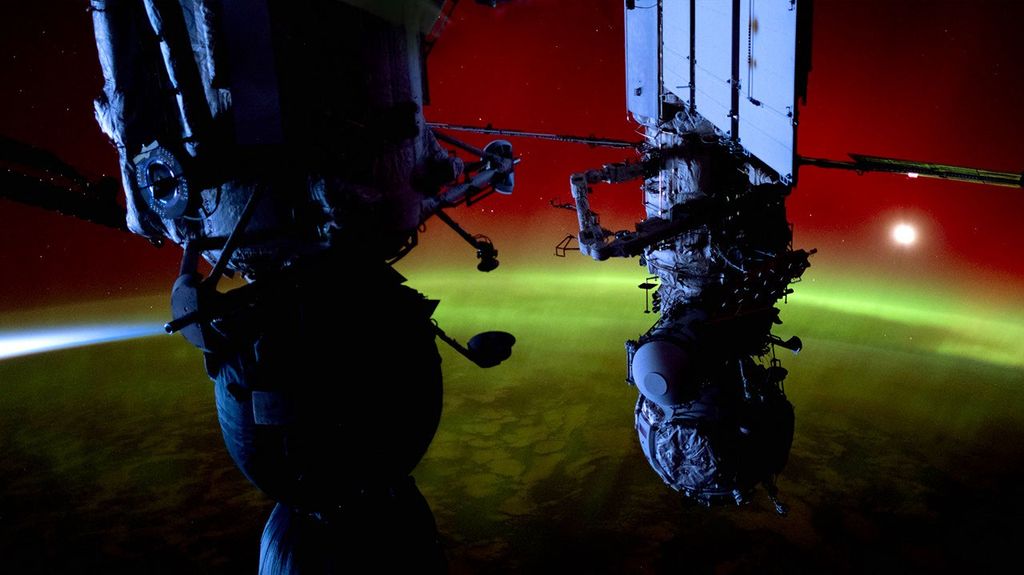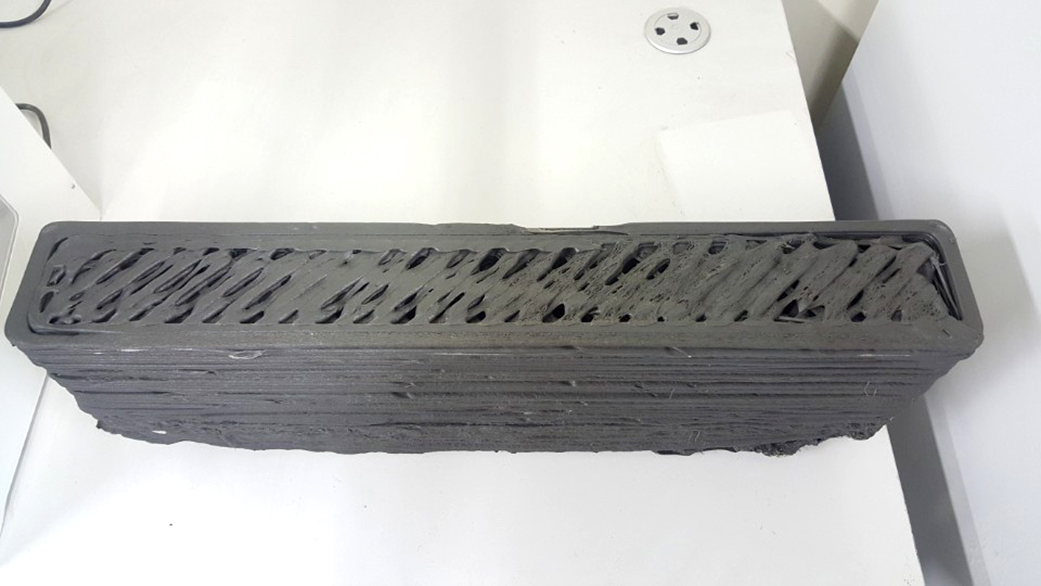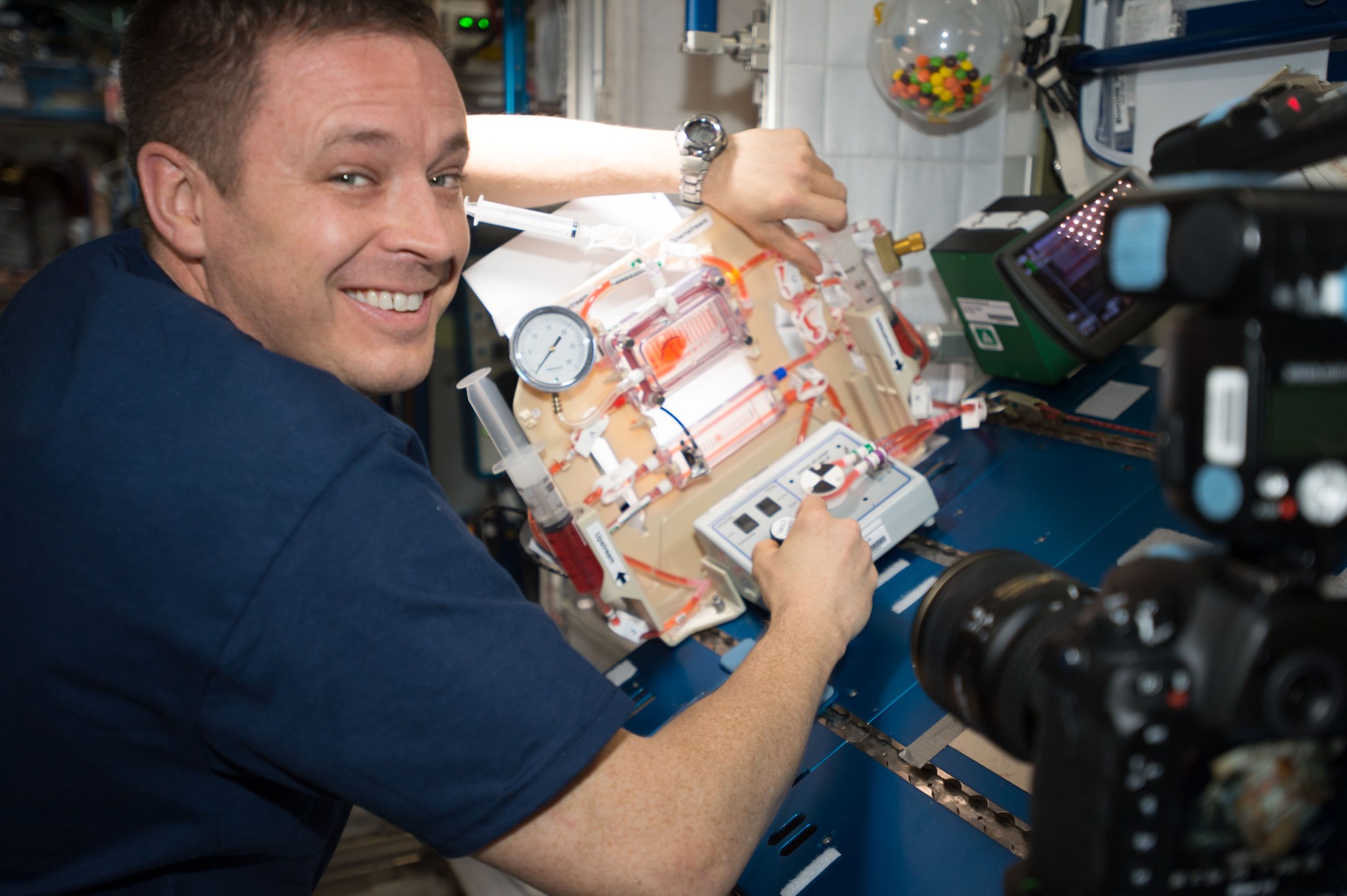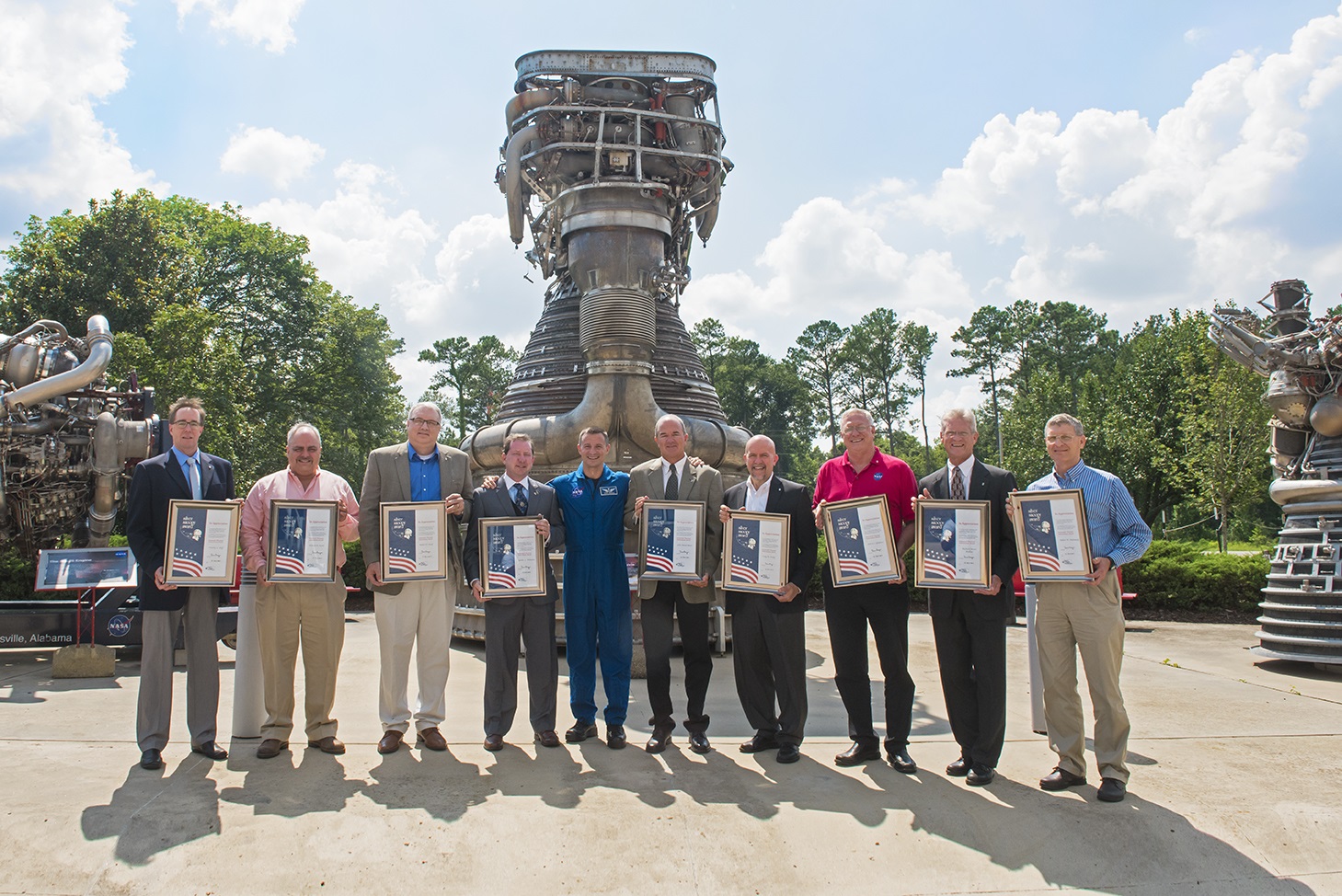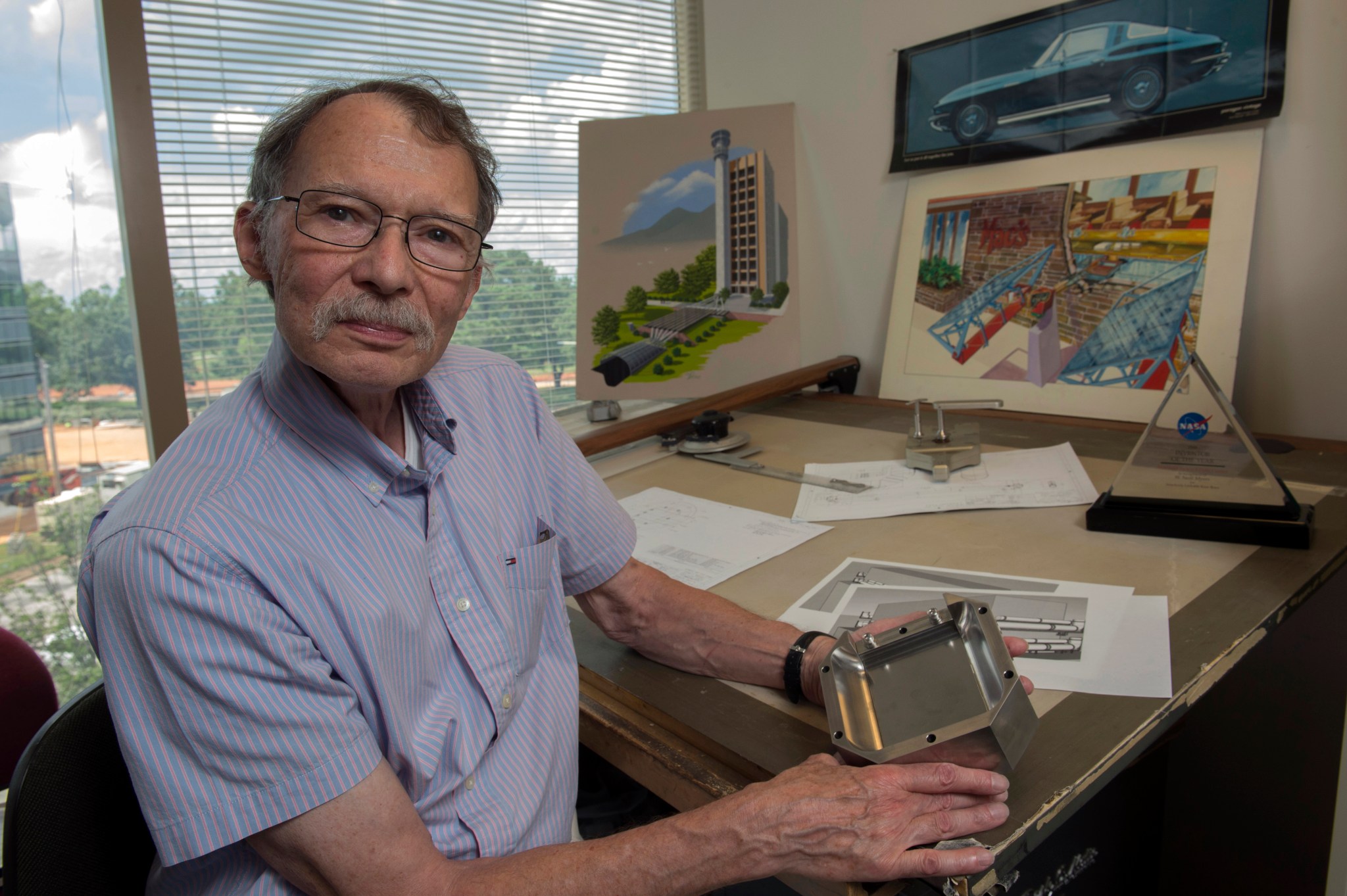In This Week’s Star
- Director’s Corner: The Big Moments Belong to You
- Six Teams Earn Honors, Prize Money in Second Construction Level of NASA Challenge to 3-D Print a Habitat
- Space Station Crew Members Working on Improved Life Support System for Deep Space
- Nine Marshall Team Members Honored with Silver Snoopy Awards
- Marshall’s Most Patented Inventor Celebrates 50 Years with NASA
- Marshall Astrophysicist Michelle Hui Chases Cosmic Rays
- U.S. Space & Rocket Center unveils Shuttle Training Aircraft Exhibit
- Former NASA Administrator speaks at Space Camp Hall of Fame Banquet
- Marshall Purchase Card Program Transitioning to the NSSC
- This Week in NASA History: Apollo 11 Launches — July 16, 1969
- Juno and New Horizons Missions Highlighted on ‘This Week @NASA’
- Obituaries
Director’s Corner: The Big Moments Belong to You
“This rocket is real, and we’re building it now.”
This isn’t just my message to our partners and stakeholders around the world, this is what I keep hearing at conferences like the American Institute of Aeronautics and Astronautics Propulsion and Energy Forum.
Here at NASA’s Marshall Space Flight Center, we know the Space Launch System is real, of course, but there is this new energy — for lack of a better word — percolating through the space exploration community that I can’t help but believe is tied to the progress we’ve made on the hardware and testing. When SLS launches from American soil in 2019, it will be a truly awesome event. But as each component of the rocket is completed, the world is getting a glimpse of the scale of what we’re doing.
People believe in NASA’s greater purpose. And what SLS, NASA’s Orion spacecraft and our entire deep-space exploration program represent is a return to missions of transformational magnitude. What is amazing to me is that the arc of history passes through Marshall and the Tennessee Valley, once again.
Moments like NASA’s Barge Pegasus arriving with an SLS engine section structural test article and NASA’s Super Guppy Aircraft flying through the skies over Huntsville, on its way to pick up the Orion Stage Adapter, belong to you. These are the milestones of progress, as well as reminders of what’s at stake, and the road ahead. This principle applies to everything that we do, from doubling science operations on the International Space Station in the coming months, to moving the Imaging X-ray Polarimetry Explorer from a winning idea to state-of-the-art hardware ready for launch.
I know we’ve got the team in place to be successful across the board, and I hear that from people around the country all the time. Our programs and projects are a reflection of the talented men and women who make them possible. Last week I stood on the stage of Morris Auditorium with NASA’s Johnson Space Center Director Ellen Ochoa for the Marshall Honor Awards, and had the opportunity to thank and congratulate those recognized during the agency and center programs. It was a humbling experience and a great reminder that no single accomplishment occurs in a vacuum — we are only as strong as the team around us.
Finally, I want to thank everyone who volunteered for this year’s NASA in the Park. The activities and exhibits were a hit with the crowd, and the staff on-hand did a great job of showcasing our amazing work to our friends, neighbors and supporters. This event was a true celebration of what we do at NASA, and a great way to acknowledge the role the community plays in enabling our future.
It’s been an action-packed summer. I truly appreciate how hard the team is working and hope that you are also taking advantage of any opportunity you have to spend time relaxing with good company. Enjoy the rest of the summer, be safe and keep doing what you do!
Six Teams Earn Honors, Prize Money in Second Construction Level of NASA Challenge to 3-D Print a Habitat
By Janet Sudnik
NASA’s Centennial Challenges Program has awarded more than $200,000 to teams of citizen inventors that have reached the latest milestone of NASA’s 3D-Printed Habitat Challenge, completing the Phase 2: Level 2 Beam Member competition. The teams are working to find ways to 3-D print habitation structures using recyclables and simulated Martian soil, a technology goal that could support deep space exploration and advance construction capabilities on Earth.
For this level, which is the second of three sub-competitions within Phase 2, teams had to 3-D print a beam for bend testing. Scores were calculated based on the material composition and the maximum load of the beam at failure.
The winning teams are:
First place: Moon X Construction of Seoul, South Korea (International team, not eligible for prize money)
Second place: Form Forge of Oregon State University, Corvallis – $67,465
Third place: Foster +Partners | Branch Technology of Chattanooga, Tennessee – $63,783 (earned first place and $85,930 in Phase 2: Level 1)
Fourth place: University of Alaska of Fairbanks – $35,573 (earned second place and $14,070 in Phase 2: Level 1)
Fifth place: CTL Group Mars of Skokie, Illinois – $34,202
Sixth place: ROBOCON of Singapore (International team, not eligible for prize money)
“Recyclable plastics were used in the top three scoring teams, indicating that a thermoplastic concrete material may be viable for 3-D printing habitats on Mars,” said Rob Meuller, senior technologist for advanced projects development at the Swamp Works laboratory at NASA’s Kennedy Space Center and a subject matter expert for the competition. “Thermoplastics, which are plastic polymers that become moldable when heated, could be obtained from discarded packaging material or even created on Mars using the carbon dioxide atmosphere and hydrogen from water found in the soil. Such concrete materials could also have applications on Earth while using discarded plastic trash.”
The goal of the challenge is to foster the development of technologies to manufacture a habitat using local indigenous materials with, or without, recyclable materials. The vision is that autonomous machines will someday be deployed in deep space destinations, including Mars, to construct shelters for human habitation. On Earth, these same capabilities could be used to produce affordable housing wherever it is needed or where access to conventional building materials and skills are limited.
The challenge takes place in three phases — Phase 1, the Design Competition, was completed in 2015. Phase 2, the Structural Member Competition, has three sub-competitions, carries a $1.1 million prize purse and focuses on the material technologies needed to create structural components. The Phase 3 On-Site Habitat Competition has a $1.5 million prize purse, and will focus on automated 3-D print systems to autonomously construct a complete habitat.
Teams will now work toward Phase 2: Level 3, where they will be required to 3-D print a dome structure and provide samples for crush testing.
The 3D-Printed Habitat Challenge is run through a partnership with NASA’s Centennial Challenges Program and Bradley University in Peoria, Illinois. Bradley University has partnered with sponsors Caterpillar, Bechtel and Brick & Mortar Ventures to run the competition. NASA’s Centennial Challenges Program is part of the agency’s Space Technology Mission Directorate, and is managed at Marshall Space Flight Center.
Sudnik, an ASRC Federal/Analytical Services employee, supports the Office of Strategic Analysis & Communications.
Space Station Crew Members Working on Improved Life Support System for Deep Space
For crew members on the International Space Station to live and work in space, they depend on a collection of complex machines to ensure they have ample life-sustaining oxygen and water.
Current space station life support systems — designed and managed at NASA’s Marshall Space Flight Center — generate usable water from astronaut urine and perspiration, and separate breathable oxygen from carbon dioxide. The systems often include rotating or moving parts — that if they break or fail, could cause contamination.
NASA astronaut Jack Fischer has begun testing a new technology on the station for the Capillary Structures for Exploration Life Support investigation — studying new methods of using the physical structure of prototype life support systems to help create potable or drinkable water. He is working on the experiments with the help of the flight controllers at the Payload Operations Integration Center — science mission control for the space station, located at Marshall.
The investigation studies ways to improve water recycling and carbon dioxide removal in space to help engineers design lightweight, reliable life support systems for future missions. The experiment uses the geometry of the device to separate gasses and fluids in microgravity instead of the sorbent materials — such as silica gel — currently used to draw excess water or humidity from the air on the station. The capillary systems can be simpler than current systems because they rely on the tubes, tunnels and shapes that the gas and liquids pass through instead of complex machinery.
While originally designed on Earth, advanced life support systems like Capillary Structures cannot be tested properly here because of the forces of gravity. They are sent to the station because they require the weightlessness of microgravity to function properly. However, similar technology adapted for use in a gravity environment could be used on Earth in water recovery systems, desalination plants and other facilities.
Nine Marshall Team Members Honored with Silver Snoopy Awards
Silver Snoopy awards were presented July 12 to nine team members at NASA’s Marshall Space Flight Center. Awarded periodically by NASA’s astronaut corps, the Silver Snoopy is presented to individuals whose outstanding NASA service reflects the highest dedication to safe human spaceflight and contributes to overall mission success.
Marshall Associate Director Jonathan Pettus and NASA astronaut Dr. Drew Morgan, operations officer for the Astronaut Office at NASA’s Johnson Space Center, presented the honors.
Honorees included Timothy Huff, John David Moore and Edward Smith of the Engineering Directorate; Daryl Woods, Human Exploration Development & Operations; Gordon DeRamus, Safety and Mission Assurance Directorate; Craig Young of MTS Inc. in Huntsville, and Richard Brolliar of the ESSSA Group in Huntsville, supporting the Space Launch Systems Program Office; Dorris “Sparky” Goodman of the COLSA Corporation in Huntsville, supporting the Huntsville Operations Support Center; and Robert Patlovany of Bastion Technologies Inc. in Houston, supporting the Safety and Mission Assurance Directorate.
Marshall’s Most Patented Inventor Celebrates 50 Years with NASA
By Amanda M. Adams
It’s a gift to be able to create something out of nothing; to visualize a solution from scratch and draw something that doesn’t yet exist. For half a century, William “Neill” Myers, an engineer in the Propulsion Systems Department at NASA’s Marshall Space Flight Center, has done just that.
“He has a gift of creating elegantly simple, creative designs that work,” said Myers’ branch chief David Whitten. “Whenever we need a new design for something that we don’t have a good example to follow, we go to Neill. He can always come up with a new, creative way to do it.”
From his early days working on Skylab to his recent work with the Fluid Damper project, Myers’ work stands on its own. He currently holds 27 patents, more than any individual at Marshall. Just this year, his team received Marshall Space Flight Center’s Invention of the Year award for the design of the variable-aperture reciprocating reed valve on the Fluid Damper project.
Originally designed to mitigate dangerous oscillations in a launch vehicle during flight, the Fluid Damper has been adapted to stabilize skyscrapers against high winds and earthquakes. It was recently installed on a 34-story building in Brooklyn, New York, and in the future the technology could also be applied to helicopters, windmills, off-shore drilling platforms and much more. Of all his inventions, he considers this one his favorite.
“The Fluid Damper project is my favorite because it has a lot of uses and applications,” said Myers. “What makes it so interesting is that it hadn’t been thought of before. Even the mathematical equations that explain it hadn’t been derived.”
Drawings of some of his most notable inventions adorn the walls of his cubicle in Building 4203. In a day and age where most designs are created digitally, Myers still occupies one of the only drafting tables left at Marshall.
“When we went to the mechanical computer-aided design, he never really followed,” said Whitten. “He likes to draw things and he is really good at it. So we expanded his cube to fit his drafting board.”
Myers joined Marshall after he graduated from the Stevens Institute of Technology in Hoboken, New Jersey, in 1967, and has been here since. He comes from a long line of engineers and says watching his father and grandfathers sparked his interest in the field.
During his tenure with Marshall, Myers has seen space exploration evolve tremendously. His favorite memories are those of visiting Cape Canaveral to witness the launch of Apollo 11 and the first launch of the Space Shuttle Program. Myers has won numerous awards including four Invention of the Year awards, a Silver Snoopy Award and the Distinguished Service Medal.
When asked about plans for retirement, Myers says he plans to stick around for a little while longer.
“My kids ask me why don’t I retire, and I think about it, but I’m not sure when I will. My time at Marshall has been full of great experiences and continues to intrigue me today,” he said. “Part of it is this damper project — it’s so interesting, with all the different applications. I want to stick around and see where this goes.”
Adams, an ASRC Federal/Analytical Services employee, supports the Office of Strategic Analysis & Communications.
Marshall Astrophysicist Michelle Hui Chases Cosmic Rays
By Rick Smith
NASA astrophysicist Michelle Hui is on the lookout for catastrophe.
Since 2015, Hui has been part of the gamma-ray astrophysics team at NASA’s Marshall Space Flight Center. She’s part of a team working to deepen our understanding of gamma-ray bursts — colossal, high-energy explosions in distant galaxies, brighter and more powerful than any other documented events in space — using the Gamma Ray Burst Monitor on NASA’s Fermi Gamma-Ray Space Telescope.
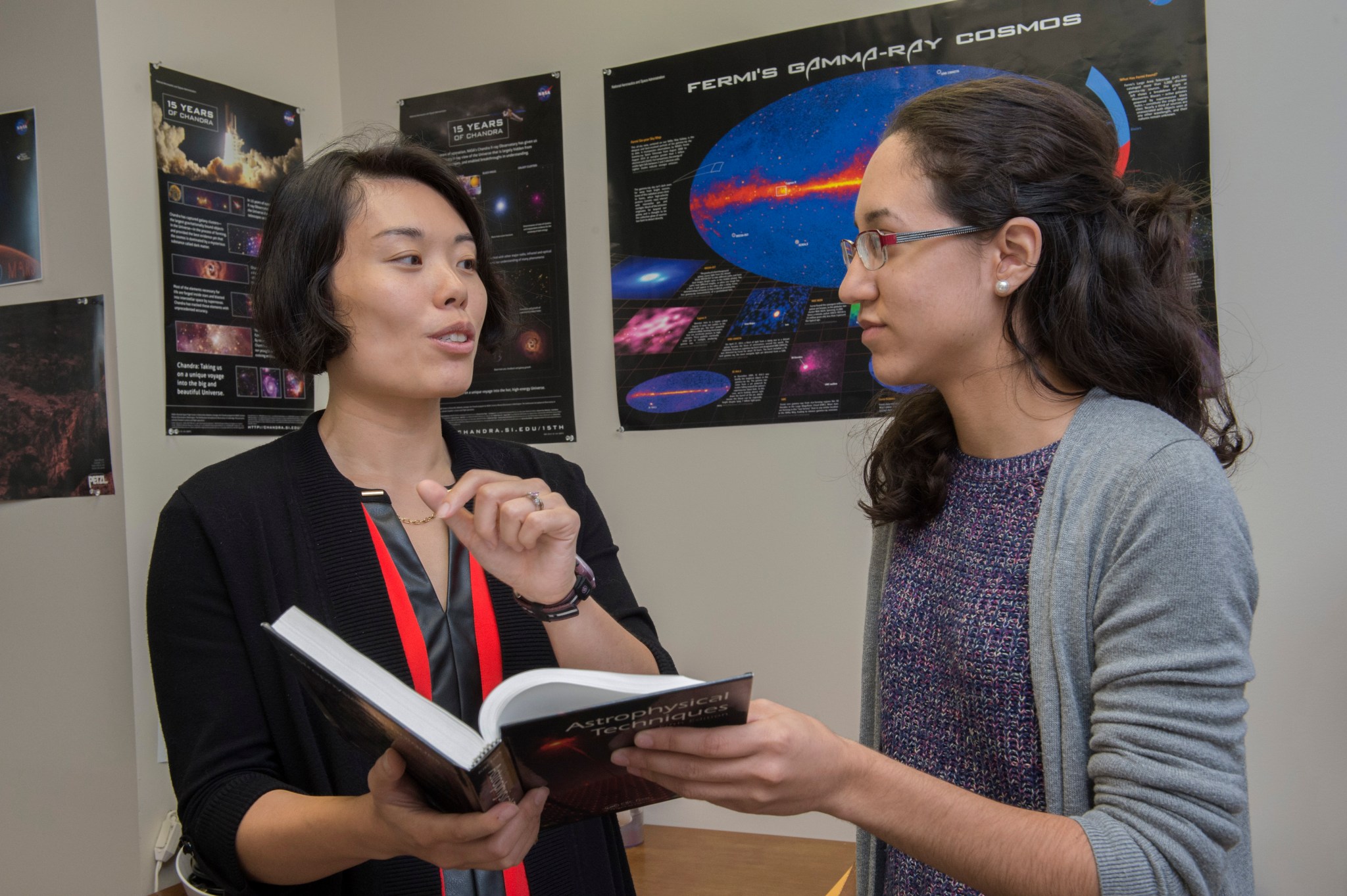
The Fermi team monitors the skies, constantly ready to document new gamma-ray bursts when they occur. “It takes a lot of patience,” Hui said. “Basically, we’re waiting for massive celestial explosions among the stars.”
Currently, they’re following up on the 2016 discovery by the National Science Foundation’s Laser Interferometer Gravitational-Wave Observatory, ground-based observatories in Washington and Louisiana, which for the first time in history detected gravitational waves — “ripples” in the fabric of space-time, first predicted by Albert Einstein in 1916.
Hui is part of Fermi’s data analysis optimization team at the National Space Science and Technology Center in Huntsville, a research facility jointly managed by Marshall and the University of Alabama in Huntsville. There, waiting for the latest gamma-ray explosion to reveal itself, the team develops new search algorithms to more accurately pinpoint burst sources and pore over findings dating back to 2008 from Fermi and other instruments that look for bursts other detection techniques may have missed.
With some 120 scientists from 25 universities and national laboratories, Hui contributes to research using the High-Altitude Water Cherenkov Gamma-Ray Observatory, built by the National Science Foundation, U.S. Department of Energy and Consejo Nacional de Ciencia y Tecnología in Mexico. In 2016, Hui helped deliver a new survey of the sky using the highest-energy gamma rays yet observed — helping physicists pursue new investigations into black holes, dark matter and other cosmic phenomena.
Hui also serves as the Gamma-ray Burst Monitor representative for the Fermi Science Support Center, answering queries from physicists and private citizens, and mentoring science interns — a part of the job she truly savors, thanks to students’ zeal for the work. She even keeps extra food in her office refrigerator to supplement their dormitory meals and summer grocery budgets. “I remember being a hungry undergrad,” she laughed.
Hui’s own passion for space blossomed early. Born in Hong Kong in 1983, she excelled early in science and math. Inspired by the movie “Apollo 13,” she dreamed of being an astronaut — but severe motion sickness in her teen years changed her plans. She was 14 when she immigrated with her family to New Jersey in 1998. The English Hui learned in Hong Kong, secondary to her native Cantonese, improved quickly as she spent more time around American teenagers and explored the polyglot wonders of nearby New York.
Hui received her bachelor’s degree in engineering physics in 2005 from Case Western Reserve University in Cleveland, and a doctorate in physics in 2011 from the University of Utah in Salt Lake City — where she met her future husband Dustin Winslow, now a materials scientist for a Huntsville firm. After working as a research associate at Michigan Technological University in Houghton from 2012-2015, Hui joined Marshall in late 2015.
Today, said Hui, she wouldn’t trade her role at Marshall for anything. “This is my passion,” she said. “If you don’t love what you do, it’s going to have a very negative effect on your life, your relationships, your sense of self-worth.”
Her eyes drop to her computer screen, awaiting updates about the biggest explosions in the cosmos. “That would be the real catastrophe,” she added.
Smith, an ASRC Federal/Analytical Services employee, supports Marshall’s Office of Strategic Analysis & Communications.
U.S. Space & Rocket Center unveils Shuttle Training Aircraft Exhibit

Former NASA astronaut Robert “Hoot” Gibson speaks to a crowd July 13 at the U.S. Space & Rocket Center’s Shuttle Park during a ceremony to unveil the center’s newest exhibit, the NASA 945 Shuttle Training Aircraft. NASA used the modified Gulfstream G-II jet to train pilot astronauts, including Gibson, for one of the most critical phases of a space shuttle mission — the unpowered landing of the space shuttle orbiter. The retired training aircraft has a highly modified cockpit in order to provide the most realistic approach and landing training possible. The U.S. Space & Rocket Center — the official visitor center for NASA’s Marshall Space Flight Center — plans to eventually construct a platform that will allow visitors to view the interior of the plane. (NASA/MSFC/Emmett Given)
Former NASA Administrator speaks at Space Camp Hall of Fame Banquet
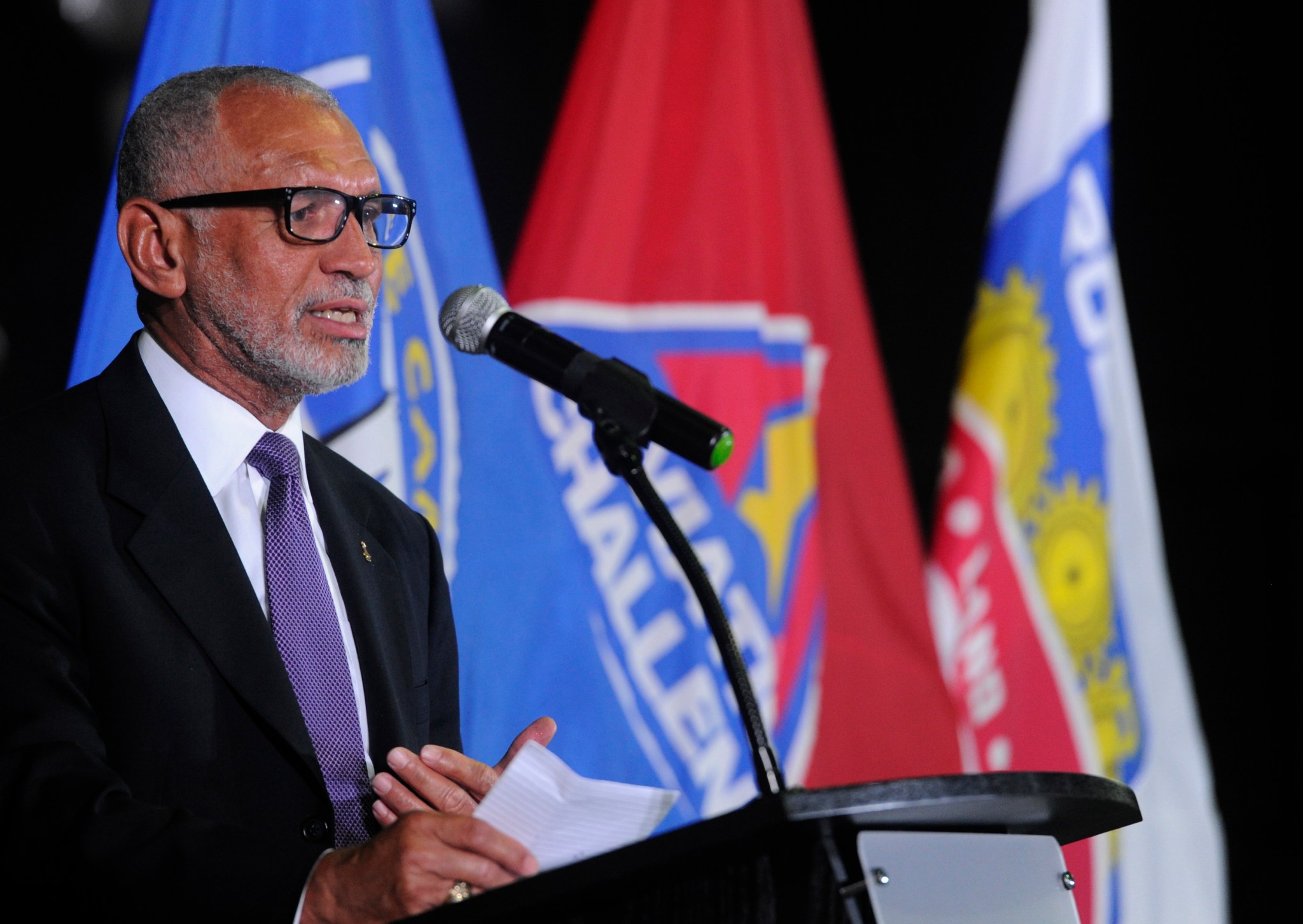
Former NASA Administrator Charles Bolden speaks at the 2017 Space Camp Hall of Fame Induction Banquet July 14 at the U.S. Space & Rocket Center’s Davidson Center. Proceeds from the event benefited the Space Camp Scholarship Fund. Now in its 10th year, the Space Camp Hall of Fame was established to honor outstanding members of the Space Camp family, including graduates and former employees who have distinguished themselves in their respective careers and also friends of the center who have made considerable contributions to further the goals of the Space Camp programs. The U.S. Space & Rocket Center is the official visitor center of NASA’s Marshall Space Flight Center. (Eric Shultz/Rocket City Photo)
Marshall Purchase Card Program Transitioning to the NSSC
The Marshall Purchase Card Program, which streamlines procurement, ordering, payment and administrative procedures, will transition to the NASA Shared Services Center beginning Aug. 1.
NASA Marshall Space Flight Center cardholders will continue resolving their monthly bank statements and Marshall officials will continue approving transactions. The importing and exporting of monthly transactions, as well as account setup and maintenance, will now be performed by the NASA Shared Services Center Purchase Card Team.
Cardholders with questions should contact the Shared Services Customer Contact Center at 877-677-2123. For more information, visit the NASA Purchase Card Program’s webpage.
This Week in NASA History: Apollo 11 Launches — July 16, 1969
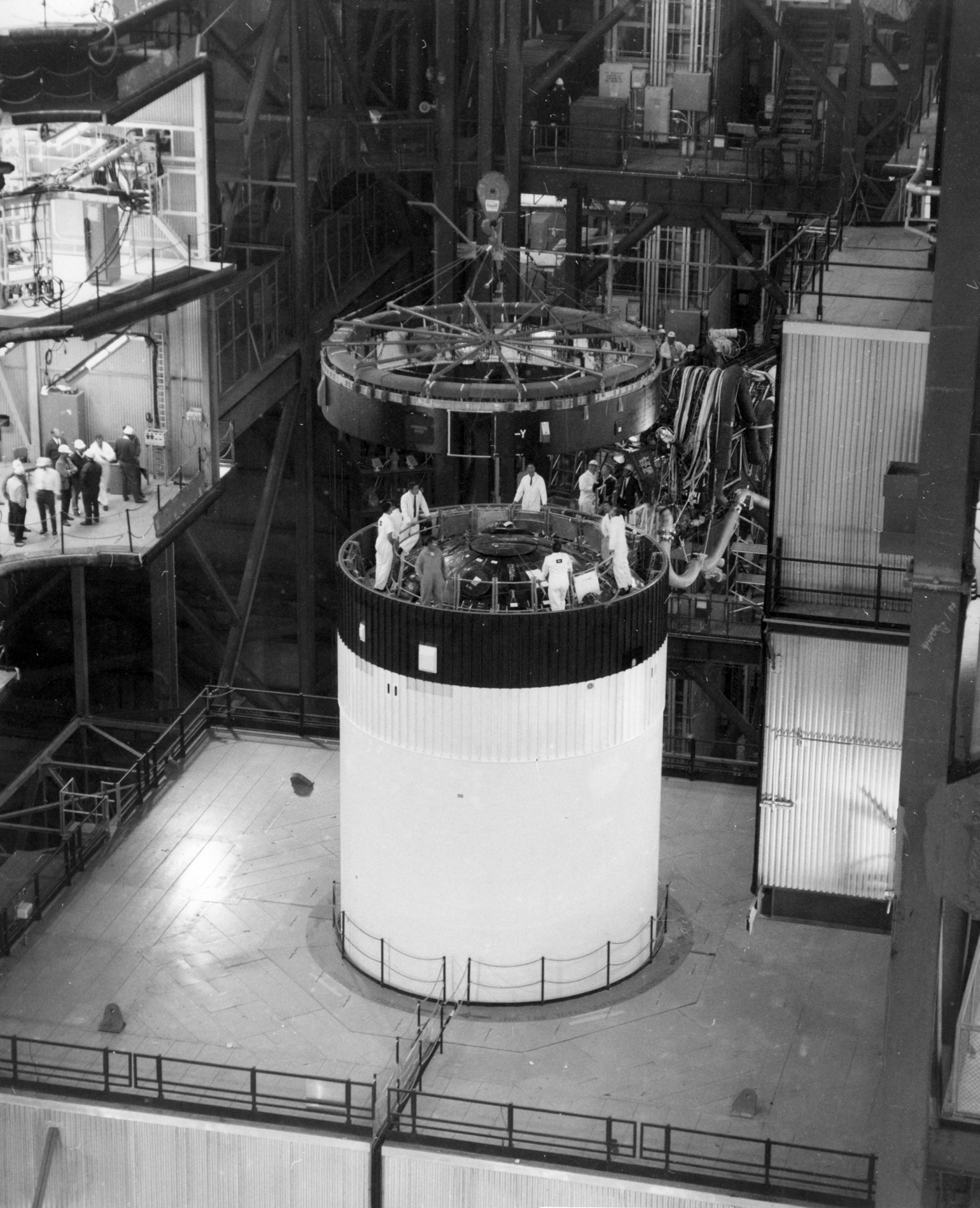
This week in 1969, Apollo 11 launched from NASA’s Kennedy Space Center. Here, the Instrument Unit is lowered into place atop the third stage of the Saturn V launch vehicle in the Vehicle Assembly Building at Kennedy. Designed at NASA’s Marshall Space Flight Center, the Instrument Unit served as the “nerve center” for the Saturn V, providing guidance and control, command and sequence of vehicle functions, telemetry and environmental control. Marshall designed, developed and managed the production of the Saturn V rocket that took astronauts to the moon. Today, Marshall is developing NASA’s Space Launch System, the most powerful rocket ever built that will be capable of sending astronauts deeper into space than ever before, including to Mars. The NASA History Program is responsible for generating, disseminating, and preserving NASA’s remarkable history and providing a comprehensive understanding of the institutional, cultural, social, political, economic, technological, and scientific aspects of NASA’s activities in aeronautics and space. For more pictures like this one and to connect to NASA’s history, visit the Marshall History Program’s webpage. (NASA)
Juno and New Horizons Missions Highlighted on ‘This Week @NASA’
The Juno and New Horizons missions are featured in the latest edition of “This Week @NASA,” a weekly video program broadcast nationwide on NASA-TV and posted online.
On July 10, NASA’s Juno spacecraft completed its seventh perijove — or close flyby of Jupiter. It flew directly over the planet’s iconic Great Red Spot — about 5,600 miles above it. All of the spacecraft’s science instruments and its JunoCam imager were active, providing the first up-close look at the 10,000-mile-wide storm that has intrigued humans for centuries. Juno’s next close flyby of Jupiter will occur Sept. 1.
Farther out in the solar system, the New Horizons spacecraft continues its mission. A new flyover video was released to celebrate the two-year anniversary of the spacecraft’s flyby of Pluto, which happened July 14, 2015. Meanwhile, on July 10, NASA’s Stratospheric Observatory for Infrared Astronomy aircraft used its 100-inch telescope to probe the space around 2014 MU69, an object in the Kuiper Belt, as it occulted — or passed in front of a star. The event provided an opportunity to look for debris that might pose a risk when New Horizons flies by on Jan. 1, 2019.
Juno and New Horizons are part of NASA’s New Frontiers Program managed at NASA’s Marshall Space Flight Center.
View this and previous episodes at “This Week @NASA” on NASA’s YouTube page.
Obituaries
Gena A. Cox, 54, of Decatur, Alabama, died July 8. She began working at the Marshall Center in 1993, where she was still employed as a training consultant specialist at the time of her death. She is survived by her husband, Stephen Cox.
John F. Stone, 92, of Huntsville, died July 9. He retired from the Marshall Center in 1992 as a project management supervisor.
















